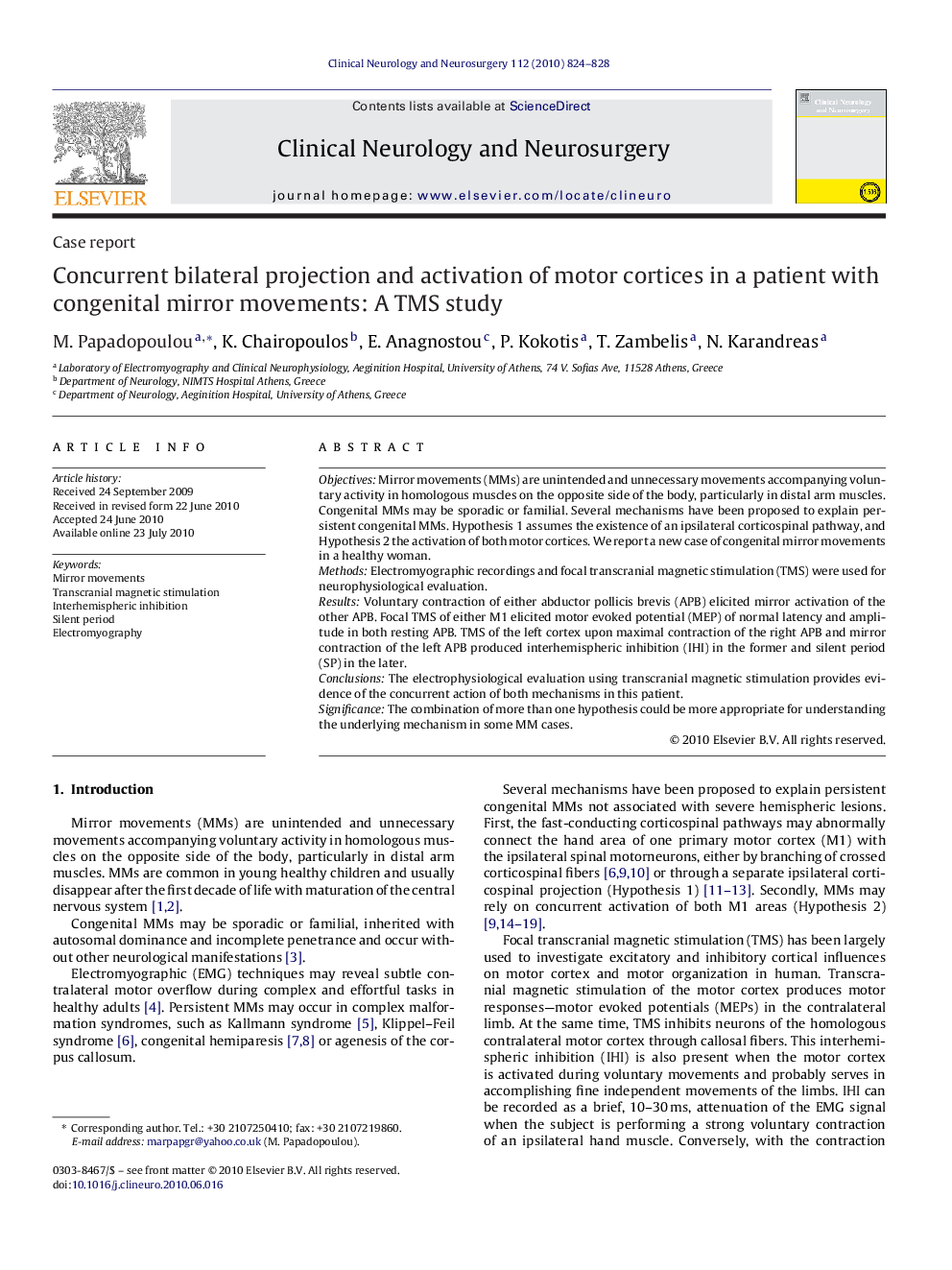| Article ID | Journal | Published Year | Pages | File Type |
|---|---|---|---|---|
| 3041225 | Clinical Neurology and Neurosurgery | 2010 | 5 Pages |
ObjectivesMirror movements (MMs) are unintended and unnecessary movements accompanying voluntary activity in homologous muscles on the opposite side of the body, particularly in distal arm muscles. Congenital MMs may be sporadic or familial. Several mechanisms have been proposed to explain persistent congenital MMs. Hypothesis 1 assumes the existence of an ipsilateral corticospinal pathway, and Hypothesis 2 the activation of both motor cortices. We report a new case of congenital mirror movements in a healthy woman.MethodsElectromyographic recordings and focal transcranial magnetic stimulation (TMS) were used for neurophysiological evaluation.ResultsVoluntary contraction of either abductor pollicis brevis (APB) elicited mirror activation of the other APB. Focal TMS of either M1 elicited motor evoked potential (MEP) of normal latency and amplitude in both resting APB. TMS of the left cortex upon maximal contraction of the right APB and mirror contraction of the left APB produced interhemispheric inhibition (IHI) in the former and silent period (SP) in the later.ConclusionsThe electrophysiological evaluation using transcranial magnetic stimulation provides evidence of the concurrent action of both mechanisms in this patient.SignificanceThe combination of more than one hypothesis could be more appropriate for understanding the underlying mechanism in some MM cases.
